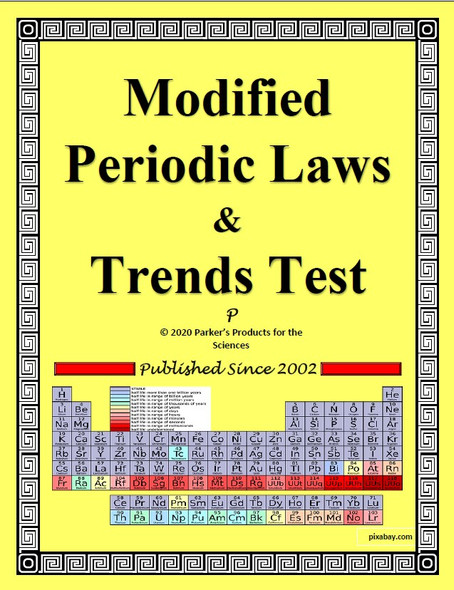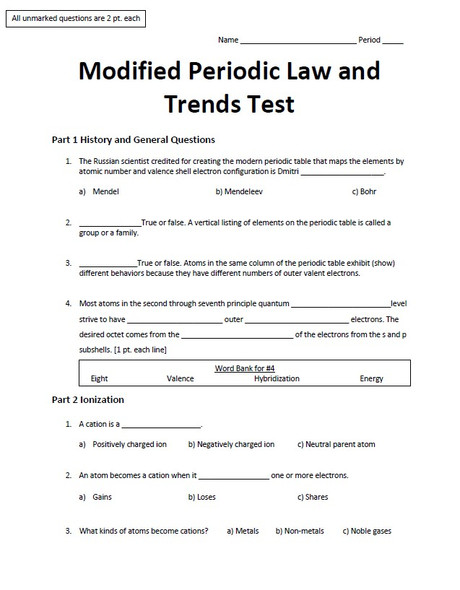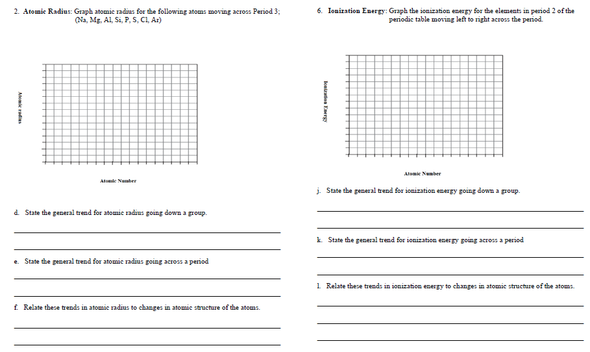Description
Welcome! This listing features a four-page exam with a full answer key for a unit about periodic laws and trends in chemistry. It covers the topics of electronegativity, ionization energy, atomic radius, ionization, isoelectronic series, valence electrons, hybridization, and group or family patterns. The test also honors Dmitri Mendeleev, who founded the modern periodic table.
In the test, it is the students’ quest to perform the following tasks.
- Recognize the creator of the modern periodic table
- Define electronegativity and ionization energy
- State the periodic trends for atomic radius, electronegativity, and ionization energy
- Explain the scientific reason for the aforementioned trends
- Accurately compare the size of cations and anions to their respective parent atoms
- Identify which atom in a pairing of two different atoms has a larger atomic radius, requires a higher ionization energy, and is more electronegative
- List three cations and three anions that are isoelectronic with the nearest noble gas
- Identify which group of elements has a low first ionization energy and a high second ionization energy, etc.
- Identify the units of measurement used to express ionization energy
- Identify which kind of atoms become cations and explain how they do so
- Identify which kind of atoms become anions and explain how they do so
- Explain why parent atoms want to become isoelectronic with the nearest noble gas
- Identify which blocks of elements hybridize to form the octet of valence electrons
- Predict whether two species are ready to form an ionic bond
- Explain why atoms in the same family exhibit similar behaviors
The test offers a myriad of question styles – multiple-choice, short answer, fill-in-the-blank, and circle the correct choice. I maximized the check for understanding opportunity on this full-page exam in a field-tested, user-friendly lay out.
Students will need access to a periodic table to complete the test.
I again provided a four-page key with the answers in red font.
This PDF document will become editable upon conversion to Microsoft Word with an Adobe Acrobat Reader DC Program.
Thank you for your interest. I am confident this resource will serve you well.















